Instruction
Two secrets to improve your ball flight
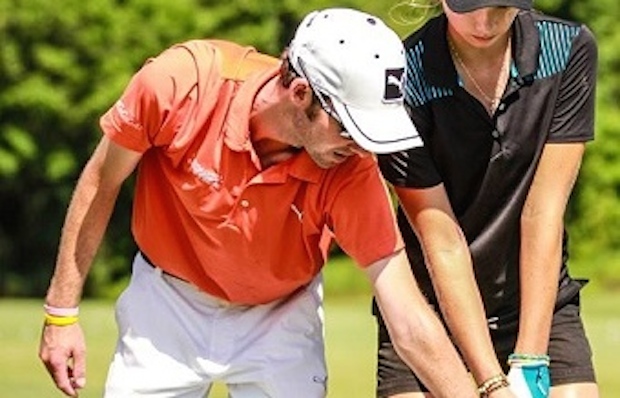
In recent years, advances in golf technology have shown that there are many variables that go into a desired ball flight. Doppler radar launch monitors like FlightScope and Trackman have proven that the club face’s position at impact is responsible for a golf ball’s starting direction and the path of the club is responsible for the curvature of the ball.
In order to play a proper fade, for example, the club face will need be closed to the target line but open to the path of the club at impact. To play a draw, the orientations need to be the exact opposite: the club face is open to the target and closed to the path.
Understanding these ball flight laws is very important to owning your shot shape. After golfers have a good understanding of them, it’s time that they learn how to achieve their desired flight.
Two things I rarely hear discussed when it comes to curving the golf ball is hand path and the use of the ground during the swing. They are two keys that are vital to controlling the face angle and club path at impact.
Hand path is the direction that the hands move in the backswing and downswing. An easy way to think about it is to imagine a U-shaped arc on the inside of the golf club that sits directly under a players hands at address. Depending on the desired shot shape, the hands can move on the arc, outside the arc or inside the arc in the backswing. The hands can do the same thing in the downswing and at impact: they can move on, inside, or outside the arc depending on the desired shot shape.
How a player uses the ground during the swing also has a big influence on their body lines at impact. The movement of pressure from the ground up can be quite different for a golfer who hits a draw compared to one who fades the ball.
In one of my previous articles, I talked about ground forces in regards to the center of pressure (COP) and how player’s COP trace can affect his or her golf swing. I gave a generic example to help the everyday golfer. I’m now expanding on that to help the golfers improve their shot shape. Below I have listed some keys to help each player.
Fade Hand Path and COP Trace
Backswing
- The hands move in front and away from the body.
- The pressure will move between the balls of the feet and the toe of the trail foot as the player gets closer to the top of the backswing.
Downswing
- The hands continue to work in front of the body, causing them to pull in closer to the body through impact.
- Pressure will move towards the heel of the lead foot as the hand path moves in.
Below is an example of what the fade hand path looks like as shown by a very good fader of the ball, K.J. Choi.
Here is the example of what this type of player would look like on a balance plate (at impact). The COP is in the lead heel as indicated by the red, orange, and yellow colors.
Again, this is a photo of impact, but if we backtrack and look at where the initial COP trace line begins (between both feet on graph) at the address position, you will find the line moves back and slightly up toward the ball of the foot at the top of the backswing (this is when the hands in the backswing would be moving away from the body). As the player begins the downswing (hands moving in front) and finally gets to the impact position (hands moving inside) you see the line move towards the lead heel.
Draw Hand Path and COP
Backswing
- Hands move inside and close to the body.
- Pressure moves between the ball of the foot and the heel in the trail foot as the player gets closer to the top of the backswing.
Downswing
- Hands move deeper as the downswing is initiated with the hand path moving more outward through impact.
- Pressure will shift forward as the pressure moves between the ball of the foot and toe in the lead leg.
Below is an example of what a draw hand path looks like as shown by a very good drawer of the golf ball, Charlie Wi.
Below is the example of what the draw hand path would look like on a balance plate. You will see that the COP is in the ball of the foot/toe region. The pressure is indicated by the red, orange, and yellow colors.
This is a photo of impact, but if we backtrack and look at where the initial COP trace line begins (between both feet on the graph) at the address position, you will find the line moves back somewhere between the ball of the foot and heel (the hands are moving inward and staying close to the body). As the player begins the downswing (hands moving deeper behind body) and finally gets to the impact position (hands moving outward) you see the trace line moves outward as well.
- LIKE2
- LEGIT2
- WOW0
- LOL0
- IDHT0
- FLOP0
- OB0
- SHANK0
Instruction
The Wedge Guy: The easiest-to-learn golf basic

My golf learning began with this simple fact – if you don’t have a fundamentally sound hold on the golf club, it is practically impossible for your body to execute a fundamentally sound golf swing. I’m still a big believer that the golf swing is much easier to execute if you begin with the proper hold on the club.
As you might imagine, I come into contact with hundreds of golfers of all skill levels. And it is very rare to see a good player with a bad hold on the golf club. There are some exceptions, for sure, but they are very few and very far between, and they typically have beat so many balls with their poor grip that they’ve found a way to work around it.
The reality of biophysics is that the body moves only in certain ways – and the particulars of the way you hold the golf club can totally prevent a sound swing motion that allows the club to release properly through the impact zone. The wonderful thing is that anyone can learn how to put a fundamentally sound hold on the golf club, and you can practice it anywhere your hands are not otherwise engaged, like watching TV or just sitting and relaxing.
Whether you prefer an overlap, interlock or full-finger (not baseball!) grip on the club, the same fundamentals apply. Here are the major grip faults I see most often, in the order of the frequency:
Mis-aligned hands
By this I mean that the palms of the two hands are not parallel to each other. Too many golfers have a weak left hand and strong right, or vice versa. The easiest way to learn how to hold the club with your palms aligned properly is to grip a plain wooden ruler or yardstick. It forces the hands to align properly and shows you how that feels. If you grip and re-grip a yardstick several times, then grip a club, you’ll see that the learning curve is almost immediate.
The position of the grip in the upper/left hand
I also observe many golfers who have the butt of the grip too far into the heel pad of the upper hand (the left hand for right-handed players). It’s amazing how much easier it is to release the club through the ball if even 1/4-1/2″ of the butt is beyond the left heel pad. Try this yourself to see what I mean. Swing the club freely with just your left hand and notice the difference in its release from when you hold it at the end of the grip, versus gripping down even a half inch.
To help you really understand how this works, go to the range and hit shots with your five-iron gripped down a full inch to make the club the same length as your seven-iron. You will probably see an amazing shot shape difference, and likely not see as much distance loss as you would expect.
Too much lower (right) hand on the club
It seems like almost all golfers of 8-10 handicap or higher have the club too far into the palm of the lower hand, because that feels “good” if you are trying to control the path of the clubhead to the ball. But the golf swing is not an effort to hit at the ball – it is a swing of the club. The proper hold on the club has the grip underneath the pad at the base of the fingers. This will likely feel “weak” to you — like you cannot control the club like that. EXACTLY. You should not be trying to control the club with your lower/master hand.
Gripping too tightly
Nearly all golfers hold the club too tightly, which tenses up the forearms and prevents a proper release of the club through impact. In order for the club to move back and through properly, you must feel that the club is controlled by the last three fingers of the upper hand, and the middle two fingers of the lower hand. If you engage your thumbs and forefingers in “holding” the club, the result will almost always be a grip that is too tight. Try this for yourself. Hold the club in your upper hand only, and squeeze firmly with just the last three fingers, with the forefinger and thumb off the club entirely. You have good control, but your forearms are not tense. Then begin to squeeze down with your thumb and forefinger and observe the tensing of the entire forearm. This is the way we are made, so the key to preventing tenseness in the arms is to hold the club very lightly with the “pinchers” — the thumbs and forefingers.
So, those are what I believe are the four fundamentals of a good grip. Anyone can learn them in their home or office very quickly. There is no easier way to improve your ball striking consistency and add distance than giving more attention to the way you hold the golf club.
More from the Wedge Guy
- The Wedge Guy: Golf mastery begins with your wedge game
- The Wedge Guy: Why golf is 20 times harder than brain surgery
- The Wedge Guy: Musings on the golf ball rollback
- LIKE85
- LEGIT13
- WOW5
- LOL1
- IDHT0
- FLOP4
- OB1
- SHANK8
Instruction
Clement: Stop ripping off your swing with this drill!

Not the dreaded headcover under the armpit drill! As if your body is defective and can’t function by itself! Have you seen how incredible the human machine is with all the incredible feats of agility all kinds of athletes are accomplishing? You think your body is so defective (the good Lord is laughing his head off at you) that it needs a headcover tucked under the armpit so you can swing like T-Rex?
- LIKE0
- LEGIT2
- WOW2
- LOL0
- IDHT0
- FLOP0
- OB0
- SHANK2
Instruction
How a towel can fix your golf swing

This is a classic drill that has been used for decades. However, the world of marketed training aids has grown so much during that time that this simple practice has been virtually forgotten. Because why teach people how to play golf using everyday items when you can create and sell a product that reinforces the same thing? Nevertheless, I am here to give you helpful advice without running to the nearest Edwin Watts or adding something to your Amazon cart.
For the “scoring clubs,” having a solid connection between the arms and body during the swing, especially through impact, is paramount to creating long-lasting consistency. And keeping that connection throughout the swing helps rotate the shoulders more to generate more power to help you hit it farther. So, how does this drill work, and what will your game benefit from it? Well, let’s get into it.
Setup
You can use this for basic chip shots up to complete swings. I use this with every club in my bag, up to a 9 or 8-iron. It’s natural to create incrementally more separation between the arms and body as you progress up the set. So doing this with a high iron or a wood is not recommended.
While you set up to hit a ball, simply tuck the towel underneath both armpits. The length of the towel will determine how tight it will be across your chest but don’t make it so loose that it gets in the way of your vision. After both sides are tucked, make some focused swings, keeping both arms firmly connected to the body during the backswing and follow through. (Note: It’s normal to lose connection on your lead arm during your finishing pose.) When you’re ready, put a ball in the way of those swings and get to work.

Get a Better Shoulder Turn
Many of us struggle to have proper shoulder rotation in our golf swing, especially during long layoffs. Making a swing that is all arms and no shoulders is a surefire way to have less control with wedges and less distance with full swings. Notice how I can get in a similar-looking position in both 60° wedge photos. However, one is weak and uncontrollable, while the other is strong and connected. One allows me to use my larger muscles to create my swing, and one doesn’t. The follow-through is another critical point where having a good connection, as well as solid shoulder rotation, is a must. This drill is great for those who tend to have a “chicken wing” form in their lead arm, which happens when it becomes separated from the body through impact.
In full swings, getting your shoulders to rotate in your golf swing is a great way to reinforce proper weight distribution. If your swing is all arms, it’s much harder to get your weight to naturally shift to the inside part of your trail foot in the backswing. Sure, you could make the mistake of “sliding” to get weight on your back foot, but that doesn’t fix the issue. You must turn into your trial leg to generate power. Additionally, look at the difference in separation between my hands and my head in the 8-iron examples. The green picture has more separation and has my hands lower. This will help me lessen my angle of attack and make it easier to hit the inside part of the golf ball, rather than the over-the-top move that the other picture produces.


Stay Better Connected in the Backswing
When you don’t keep everything in your upper body working as one, getting to a good spot at the top of your swing is very hard to do. It would take impeccable timing along with great hand-eye coordination to hit quality shots with any sort of regularity if the arms are working separately from the body.
Notice in the red pictures of both my 60-degree wedge and 8-iron how high my hands are and the fact you can clearly see my shoulder through the gap in my arms. That has happened because the right arm, just above my elbow, has become totally disconnected from my body. That separation causes me to lift my hands as well as lose some of the extension in my left arm. This has been corrected in the green pictures by using this drill to reinforce that connection. It will also make you focus on keeping the lead arm close to your body as well. Because the moment either one loses that relationship, the towel falls.


Conclusion
I have been diligent this year in finding a few drills that target some of the issues that plague my golf game; either by simply forgetting fundamental things or by coming to terms with the faults that have bitten me my whole career. I have found that having a few drills to fall back on to reinforce certain feelings helps me find my game a little easier, and the “towel drill” is most definitely one of them.
- LIKE12
- LEGIT2
- WOW2
- LOL0
- IDHT0
- FLOP2
- OB0
- SHANK8
-

 19th Hole6 days ago
19th Hole6 days agoDave Portnoy places monstrous outright bet for the 2024 Masters
-

 19th Hole2 weeks ago
19th Hole2 weeks agoThings got heated at the Houston Open between Tony Finau and Alejandro Tosti. Here’s why
-

 19th Hole7 days ago
19th Hole7 days agoTiger Woods arrives at 2024 Masters equipped with a putter that may surprise you
-

 19th Hole2 weeks ago
19th Hole2 weeks agoReport: Tiger Woods has ‘eliminated sex’ in preparation for the 2024 Masters
-

 19th Hole1 day ago
19th Hole1 day agoTwo star names reportedly blanked Jon Rahm all week at the Masters
-

 19th Hole2 weeks ago
19th Hole2 weeks agoAddiction, spinal fusion, and scam artists – Everything Anthony Kim revealed in candid interview with David Feherty
-

 19th Hole2 weeks ago
19th Hole2 weeks agoAnthony Kim says doctors told him that he ‘may not have much time left’ ahead of LIV return
-

 19th Hole19 hours ago
19th Hole19 hours agoNeal Shipley presser ends in awkward fashion after reporter claims Tiger handed him note on 8th fairway


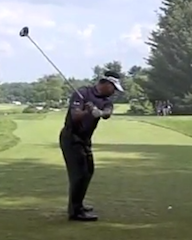
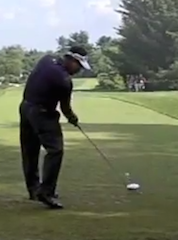

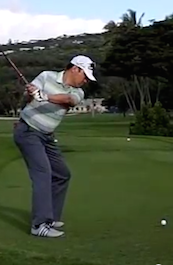
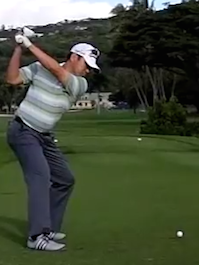

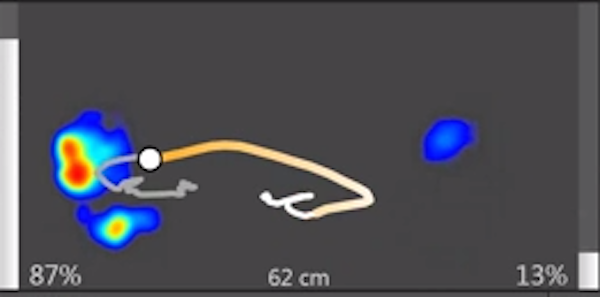

















Anon
Jul 7, 2014 at 11:53 am
So correct me if I’m wrong, but to sum up the article, you basically finish more on your front heel to fade it, and front toes to draw it?
Bill Schmedes III
Jul 8, 2014 at 10:26 pm
For the fade, the hands are moving more inward, body lines are opening quicker (circular), and pressure is moving more towards the heel because of that at impact.
For the draw, the hands are moving more outward, body lines are staying closed longer (lateral then circular), and pressure is moving more towards the ball of the foot (more centralized) at impact.
Hellstorm
Jul 5, 2014 at 9:15 pm
I would say that my normal ball flight favors a draw, but I can’t hit it consistently. I have taught myself how to hit a fade pretty well and with a significant amount of power, but when I want to hit a draw on purpose, I really struggle. If I miss my fade, the result is a dead straight shot. If I miss my draw, it is a disaster snap hook. I think I just figured out why thanks to your explanation. I close my stance and close my clubface to the target. Thanks for the help. Now I got something to work on.
Bill Schmedes III
Jul 8, 2014 at 10:27 pm
Hope it helps!
S
Jul 5, 2014 at 5:53 am
Bill – What are some ways to get the hands more inside and deep if the desired shot is a draw? Does this get the hands behind the torso with the potential to get “stuck”?
Bill Schmedes
Jul 5, 2014 at 8:15 am
Thanks for the note. I’m big on mirror work allowing the player to get the feel with a visual to back up what they’re doing is correct. The hands can be deeper in the downswing and still be working with the body. I’ll have a player take their setup, then have them drop back foot back so the toe is off heel of front foot, then make 3/4 swings. This helps hand path get deeper but not stuck.
Hope that helps. Thanks!
Pingback: Two secrets to improve your ball flight - I'd Rather Be Golfing
Pingback: Two secrets to improve your ball flight | Spacetimeandi.com
AJ Novelli
Jul 4, 2014 at 12:02 am
Great article! Now time to get the high draw back into my game…
Bill Schmedes
Jul 4, 2014 at 2:02 pm
Thanks AJ! Enjoy
Tom Stickney
Jul 3, 2014 at 11:31 pm
Like it!
Bill Schmedes
Jul 4, 2014 at 2:01 pm
Thanks Tom. I always enjoy your articles